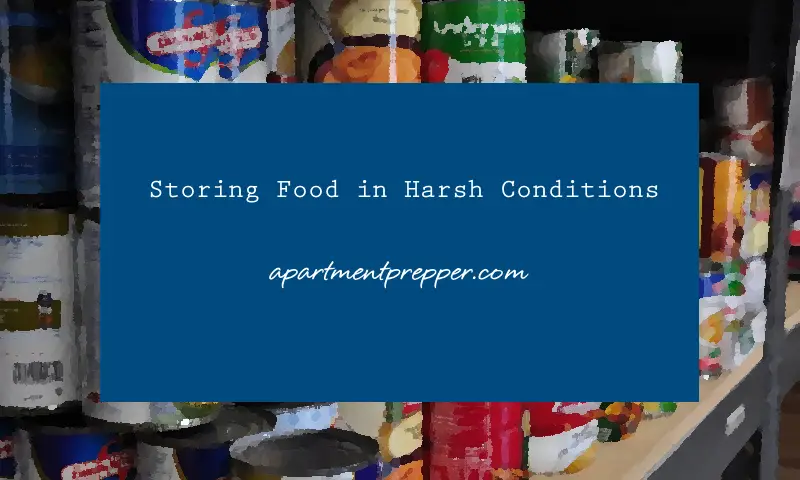This post is by Bernie Carr, apartmentprepper.com
A lot of people are now considering storing food for emergencies but feel they have obstacles that prevent them from doing so. Perhaps they feel they don’t have any free space, or someone told them there is no way they can store food under the conditions they have in their house. They then become fixated on the problem and get delayed in their efforts.
Living in a hot humid climate for at least 120 days out of the year, I am very familiar with storage issues.
Summer temperature in Texas reach over 100 degrees with 90% humidity. To save electricity, we keep the air conditioning at around 78-80 degrees. The A/C cuts down on humidity, but moisture still seeps in. This is something we cannot ignore and have learned to adapt our food storage accordingly.
Tips on storing food in harsh conditions
- Ideally, food should be stored at around 50-55 degrees, with no more that 15% humidity. Does that mean you cannot store food if you do not have these ideal conditions? Of course you can! You just need to factor in that the food stored will not last as long as it would have at cooler, drier temperatures.
- If you live in a flood zone as we do, store your food in higher floors or in the top shelves of cabinets.
- Choose canned foods that have the longest expiration dates. Although some studies have shown they can last a few years past their expiration dates, I prefer not to risk it, especially after a friend’s unfortunate experience. Getting ill from eating spoiled food is not worth it.
- Use the “First in, first out” inventory method. This ensures you use the oldest food first. I mark the expiration date with a Sharpie marker on top of the canned food and on the sides to make sure I use them before those dates.
- If you are storing bulk foods in mylar bags, observe the proper technique by using oxygen absorbers and letting all the air out. Plan on using these stored foods within five years, instead of ten, if your storage conditions are not ideal.
- Another great way to store food is by using a vacuum sealer. Users report great results from avoiding freezer burn to being able to store snacks and candy for emergencies.
- Clean the area surrounding your food storage thoroughly.
- Five gallon buckets are great for food storage. They are inexpensive and you may even get them for free. Label your buckets with the contents and the date the food was stored.
- Learn the common pests in your area and learn how to keep your home pest free The five gallon buckets mentioned above provide an additional layer of protection from pests.
- If you are storing water for drinking, use and replace the water after a year. Make a label for each container on when it was stored. Water develops mold after it’s been sitting in a warm, humid area for a while. If you do use water that has been stored for a long while, have a backup water purification system by running it through a filter, boiling etc.
- Have you ever lived without a refrigerator? It is hard but doable.
- If you do not have space in your home for storage, consider a storage facility. It must be within walking distance of your home, and must be temperature controlled. This article provides tips on choosing a good storage facility.
We all have obstacles to prepping, but don’t let them stop you. The key is to try to minimize mistakes, but continue preparing anyway.
© Apartment Prepper 2016


Good call on dating canned goods! I started doing that after I had the metal of a can of pickled beets literally dissolve due to the acidity of the food. It made a nasty black sticky mess in my food cupboard. I didn’t see a date on that can (it was probably on the corroded part), but I immediately threw out all the food in my house with an expiry date in the past. Luckily it was only a few cans.
Hi JeanneS, Those really old cans can get really gross, especially the ones that explode. Thanks for sharing your story!